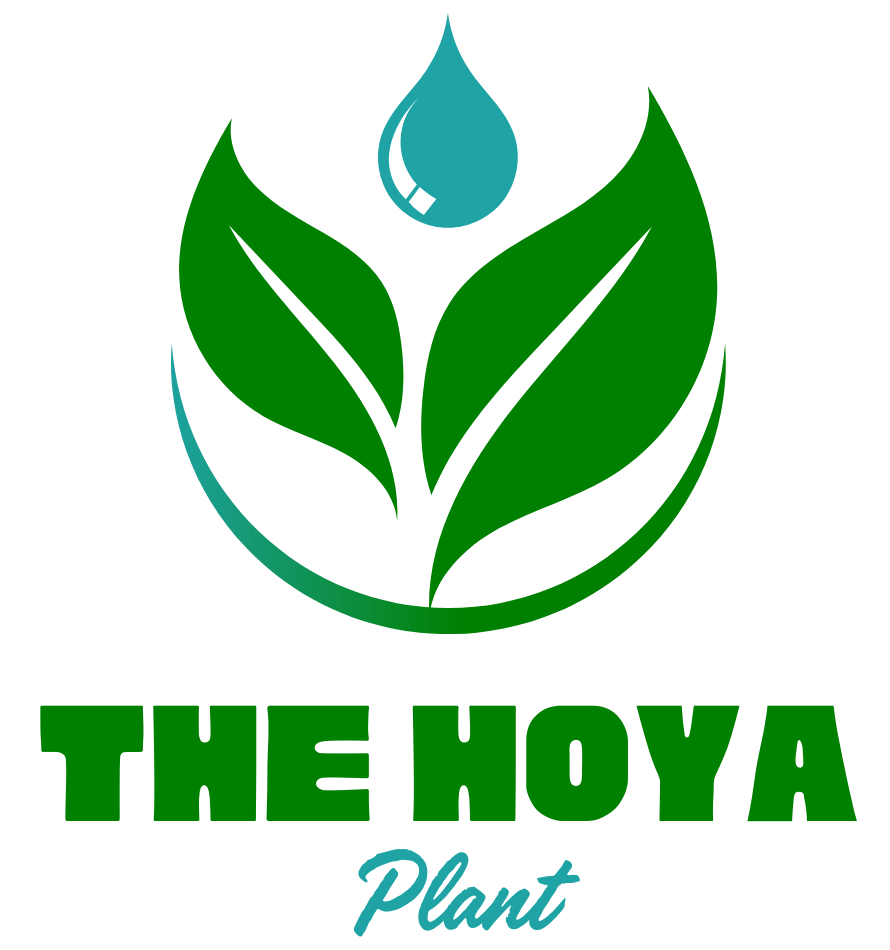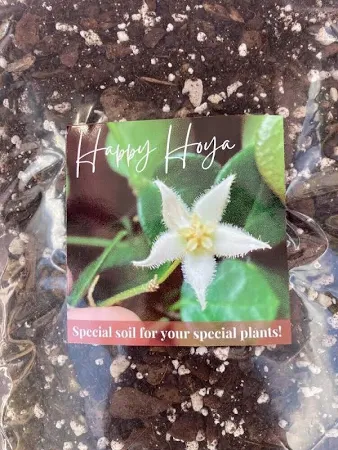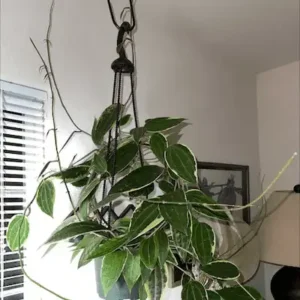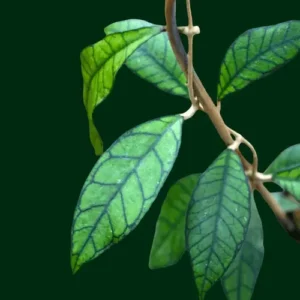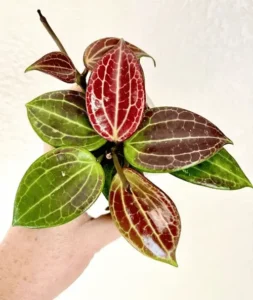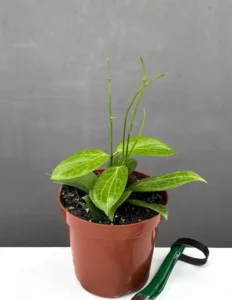Hoya Soil Mix
Hoya plants, commonly known as wax plants due to their thick, waxy leaves, are popular among indoor gardeners for their unique foliage and fragrant, star-shaped flowers. While hoyas are known for being relatively low-maintenance, one of the most important factors in their care is the right hoya plant soil mix. Proper soil provides essential nutrients and ensures the plant’s root system is healthy and protected from rot or overwatering.
In this article, we will dive deep into the soil requirements of hoya plants, helping you understand how to create the perfect soil mix to keep your hoya (plant) thriving. From understanding the basic components of a soil mix to creating a customized blend for your specific hoya species, this guide has everything you need to know.
Understanding Hoya Plants
Before we get into the details of soil, let’s first understand what hoya plants are and why their soil needs are unique.
Hoya plants belong to the Apocynaceae family and are native to tropical and subtropical regions, primarily in Asia and Australia. There are over 200 species of hoyas, each with distinct growth patterns, but they generally prefer warm temperatures, high humidity, and well-draining soil.
The natural habitat of hoya plants gives us a clue about their soil preferences. Many hoyas are epiphytes, meaning they grow on other plants, such as trees, using their roots mainly for anchoring rather than for drawing nutrients from the soil. In their natural environments, hoya plants often grow in leaf litter, moss, or other organic matter rather than in dense, water-retaining soil. This makes them highly sensitive to soggy conditions and prone to root rot if the soil is too compact or slow-draining.
Why Soil Matters for Hoya Plants
The right soil mix is essential for maintaining the balance between water retention and aeration. Too much water or poor drainage can lead to root rot, which is one of the most common problems with hoya plants. On the other hand, soil that dries out too quickly can cause the plant to become dehydrated and stunt its growth.
A good hoya soil mix provides the following:
Proper Drainage
Hoya plants hate sitting in water. Well-draining soil prevents water from pooling around the roots, reducing the risk of root rot.
Aeration
Hoya roots need access to oxygen. A light, airy soil mix allows for better airflow to the roots, preventing them from suffocating.
Moisture Retention
While hoyas dislike being waterlogged, they still need some moisture. The right soil mix will retain enough water to keep the plant hydrated between waterings.
Nutrient Availability
Like all plants, hoyas require nutrients to grow. A good soil mix will provide essential nutrients or allow them to be easily absorbed from fertilizers.
Key Components of Hoya Soil Mix
Creating the perfect hoya soil mix means understanding the various components that go into it. The ideal soil mix will be light, well-draining, and rich in organic matter. Here’s a breakdown of the key ingredients used in hoya soil:
1. Coco Coir or Peat Moss
Coco coir and peat moss are commonly used as the base for hoya soil mixes. They help with moisture retention while maintaining a light texture. While peat moss has been a traditional component, coco coir is a more sustainable alternative that offers similar benefits.
Coco Coir
Derived from coconut husks, coco coir has excellent water retention properties while being environmentally friendly. It is also resistant to compaction, meaning it helps keep the soil loose and well-aerated over time.
Peat Moss
This is a classic component for many potting soils because of its ability to hold moisture. However, peat moss can become compacted over time, leading to poor drainage. It also tends to be more acidic, which may affect some hoya species.
2. Perlite
Perlite is a volcanic glass that is heated until it expands, creating a lightweight, porous material. It helps improve soil aeration and drainage, making it a crucial component of any hoya soil mix.
Benefits of Perlite
It allows air to flow through the soil, helping prevent root suffocation. It also helps the soil dry out more quickly after watering, which is essential for preventing root rot.
3. Orchid Bark
Many hoya enthusiasts use orchid bark as part of their soil mix. Because hoyas are epiphytic plants, orchid bark helps simulate their natural environment, providing both support and aeration for the roots.
Why Use Orchid Bark
It encourages good drainage and aeration, preventing the soil from becoming too compact. Over time, as the bark breaks down, it adds organic matter to the mix, enriching the soil.
4. Pumice
Pumice is a lightweight, porous volcanic rock similar to perlite, but it doesn’t break down as quickly. It is another great option for improving drainage and soil aeration.
Benefits of Pumice
It provides long-lasting drainage and improves the structure of the soil, making it ideal for hoyas. Pumice also holds onto some moisture, ensuring that the plant doesn’t dry out too quickly.
5. Charcoal
Charcoal, especially horticultural charcoal, is often added to hoya soil mixes. It helps absorb toxins and excess moisture from the soil, reducing the risk of root rot and other fungal issues.
Charcoal’s Role
It acts as a natural purifier, keeping the soil healthy by absorbing harmful substances. It also improves the soil structure by preventing compaction and promoting aeration.
6. Compost or Worm Castings
Adding a small amount of compost or worm castings to the soil mix provides essential nutrients that can support the plant’s growth. While hoyas are not heavy feeders, having a slow-release source of nutrients in the soil ensures the plant gets the nutrition it needs without the risk of over-fertilization.
Why Use Organic Matter
Compost and worm castings improve the overall fertility of the soil, providing essential micronutrients. They also promote microbial activity in the soil, which is beneficial for root health.
7. Sand or Grit
A small amount of sand or horticultural grit can be added to the soil mix to improve drainage further. Sand helps prevent the soil from becoming too compact while allowing water to drain more freely.
Benefits of Sand
Sand creates space between soil particles, encouraging better drainage. This is especially useful if your pot doesn’t have sufficient drainage holes or if you tend to overwater your plants.
Creating the Perfect Hoya Soil Mix
Now that we’ve covered the essential components, let’s look at how to create the perfect hoya soil mix. Depending on the species and the growing environment, you can tweak the ratios of these ingredients to best suit your plant’s needs. Here’s a basic recipe that works well for most hoya species:
Basic Hoya Soil Mix Recipe
-40% coco coir or peat moss
–20% perlite or pumice
–20% orchid bark
–10% horticultural charcoal
–10% compost or worm castings
Optional: Add 5-10% sand or grit if your pot has poor drainage or if your environment is particularly humid.
Adjusting the Soil Mix for Specific Hoya Species
While the basic recipe above works for most hoya species, you may want to adjust the mix based on the specific needs of your hoya plant. Here are a few examples:
1. Hoya Carnosa
Hoya carnosa is one of the most common and forgiving hoya species. It thrives in a well-draining mix but can tolerate slightly more moisture than some of the more sensitive species. You can reduce the amount of perlite or pumice slightly and increase the amount of organic matter like compost or worm castings for this plant.
2. Hoya Kerrii
Hoya kerrii, also known as the sweetheart hoya, has a slow growth rate and is more susceptible to overwatering. For this species, focus on creating an extra airy mix with more perlite or pumice and less organic matter.
3. Hoya Linearis
Hoya linearis has fine, thin leaves and is more delicate than other hoyas. It prefers a looser, more moisture-retentive mix. You can increase the amount of coco coir or peat moss while still ensuring that the mix drains well.
4. Hoya Obovata
Hoya obovata has large, round leaves and is relatively drought-tolerant. It prefers a very airy mix, so adding extra orchid bark and pumice will benefit this species. Ensure that the mix remains light and drains quickly after watering.
Potting and Repotting Hoya Plants
Once you’ve created the perfect soil mix, it’s essential to pot your hoya correctly. Choose a pot with drainage holes to allow excess water to escape. Terracotta pots are an excellent choice for hoyas because they are porous and allow the soil to dry out more quickly. However, any pot with good drainage will work.
When repotting your hoya, be gentle with the roots, as they can be delicate. Hoyas prefer being slightly root-bound, so only repot them when necessary, typically every 2-3 years or when the plant outgrows its pot.
Watering Tips for Hoyas
Tip 1
Once you have the right soil mix, proper watering is the next critical step in keeping your hoya healthy. Hoyas prefer to dry out between waterings, but they don’t like being completely parched for long periods. The soil should be allowed to dry out about halfway before watering again. Overwatering is a common mistake that leads to root rot, so always check the soil moisture level before watering.
Tip 2
During the growing season (spring and summer), hoyas need more frequent watering, but in the dormant season (fall and winter), you can reduce watering significantly. Always adjust your watering schedule based on the environmental conditions and the specific needs of your hoya.
| FAQs What is the best soil mix for Hoya plants? The best soil mix for hoya plants is typically a good ratio such as 1 part potting mix to 1-2 parts well-draining adjustments. Perlite helps to improve soil aeration and drainage, making it a crucial component of any hoya soil mix. On the other hand, the use of orchid bark is also beneficial. Do Hoya plants need sun? Hoya plants thrive in bright, indirect sunlight with stable room temperature and humidity levels below 60. Do hoyas like dry soil? Too wet and too dry soil causes hoya leaves to fall off. Allow the soil to dry between the waterings. Hoyas prefer well-drained soil for their enough growth. |
Conclusion
Hoya plants are a delightful addition to any indoor plant collection, thanks to their striking leaves and fragrant flowers. By creating the right soil mix, you can ensure that your hoya plant thrives, providing it with proper drainage, aeration, and nutrient availability. Whether you’re growing a common hoya carnosa or a more delicate species like hoya linearis, understanding and adjusting the soil mix will help keep your plant healthy for years to come.
